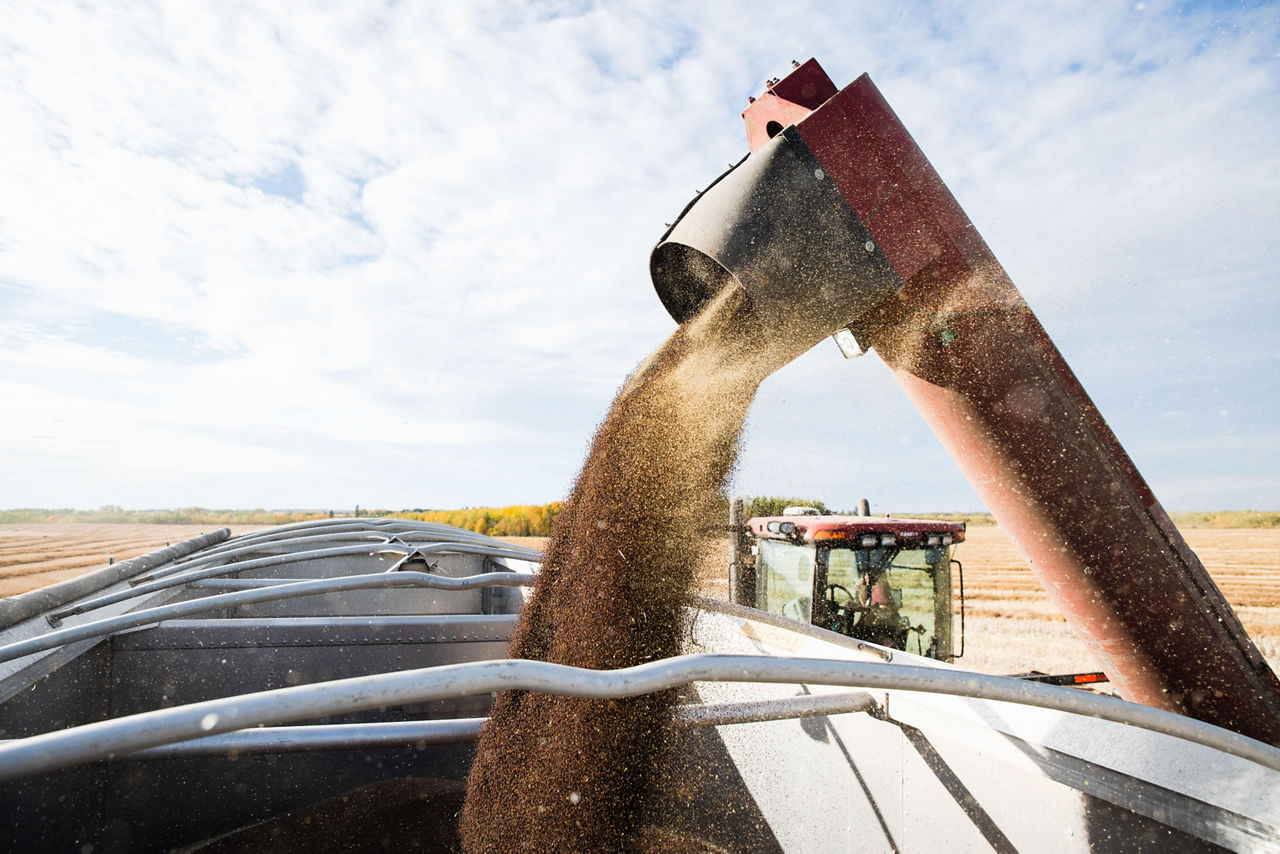In this canola market, producers need to prepare for the worst and remain hopeful for new opportunities
October 24, 2025

By Clare Stanfield
Oh, the irony of it all. After a couple of rough years for canola production, decent growing conditions in 2025 have resulted in what Bruce Burnett says will be an average to above average canola crop. Then China lowered the boom on crippling tariffs, and farmers across the Prairies threw up their hands in dismay. It seems like we just can’t catch a break.
Burnett, director of markets and weather information with Glacier FarmMedia, agrees it’s not a great situation for Canada, but there are some glimmers of light in terms of how global markets behave as well as the lessons learned the last time Canadian canola was hit with tariffs.
Markets gonna market
“Any tariff has an impact on pricing and export flows,” says Burnett. “And we are the largest exporter of canola so it’s impacting us, but it’s not as simple as it looks.”
Think of canola exporters and importers as pieces on a chess board — when one piece moves, another countermoves. As China effectively blocks all imports of Canadian canola, global movement of the crop, or export flows, start to respond.
“China still needs to import canola, so it will have to resort to imports from other origins — Ukraine, Russia, Australia,” says Burnett. “But these other origins have markets already, so the market will re-shuffle and readjust.”
But that takes time and, as the 2025 harvest goes into the bin, the whole situation is causing anxiety and marketing issues for farmers. “The good news is the playbook is still there from 2019,” says Burnett. “We will find the markets.”
Back then, it wasn’t tariffs, but an outright ban on imports of Canadian canola to China. At the time, the Chinese market accounted for 40 per cent of Canadian canola exports. The situation spurred Canada to boost exports into existing markets, like the United Arab Emirates and the EU, so those doors are already open, or at least ajar, as we grapple with China’s latest move.
In some cases, the welcome mat may even be out. For instance, the EU is Australia’s biggest customer for canola, so if the latter starts selling a big chunk of its production to China, Europe will need to fill that gap and Canada is an obvious choice.
Being a little fish in a big pond might help
Export flows adjusting themselves is one thing. What about price? While canola is a significant driver of Canada’s agricultural economy, it’s important to remember that on the world stage, it’s kind of small potatoes.
“The oilseed complex has a number of crops in it and canola is a small part,” says Burnett. “Palm oil and soy oil are the important ones, and we will get dragged along with those. The direction of those markets will determine what the price of canola is more than the tariffs will.”
Granted, oil is only one component of canola sales, there are seed and meal, too. But the vegetable oil market drives prices and Burnett says that market is big and getting bigger. “There is a five to 10 million tonne a year increase in global demand for vegetable oil,” he says. “This is driven mostly by human consumption, but domestic biofuel use in some countries is also growing. It’s a strong demand pattern and that should benefit canola in the long run.
“A grain of hope in this whole thing is that vegetable oil prices have remained steady,” says Burnett. “Soy oil prices are remaining fairly strong — I think it’s important to remember that. Canola is a high oil content seed, so it will benefit from demand and there is fundamental support for the canola market.”
What about biofuel?
There have been calls to increase Canada’s biofuel production capacity as a way to offset current tariff friction and future-proof ourselves for further market disruptions. “Farmers here are hoping to increase biofuel demand domestically and that means less seed to export,” says Burnett. It’s a good idea on the surface but it is not as straight forward a solution as it might seem.
For starters, producing more biofuels isn’t an end in itself. Yes, it gives Canadian farmers a “new” market for their raw product, but the fuel must have somewhere to go, and Burnett says that comes down to government policy (ours and that of other countries), and consumer demand — which go hand-in-hand.
“Domestically, if we want to incorporate more biofuel, fine,” he says. “But that comes down to mandates. What’s our policy going to look like on biofuel from the vegetable oil side? Are we going to have ethanol mandates, aviation fuel mandates? If so, you have to have demand for that.”
And even if Canada did mandate for increased biofuel use, there’s only so far that can take us because, as Burnett points out, we are a small country. We can produce vastly more than we can use.
Similarly, biofuel policies in export nations also drive how much they will import from Canada, and here again we run into potential trade issues, which are already having an effect on our domestic biofuel production plans.
Remember a few years ago when announcements about new biofuel facilities were coming thick and fast? All that excitement has since abated as companies press pause on those plants — like Federated Co-op did in January of this year with its combo biodiesel/canola crush plant in Regina.
“One of the problems is that we were building these plants thinking we would have free trade in vegetable oil to the U.S.,” says Burnett. “If you’re going to invest a bunch of money, you need more certainty than we have now.”
The United States’ biofuel policy is also in flux, he adds. “What is the U.S. biofuel policy going to be? Will it include canola oil?” We just don’t know, and that puts a chill on biofuel production here.
What now?
There is no sugar-coating it, canola is in for a rough ride in the coming months and, unless you sold all your canola in July, Burnett says farmers need to be prepared for that.
“The market might give us a nice rally,” he says. “But don’t expect prices to go back to the levels before the tariff announcement. Right now, canola is undervalued. The question is how long will it take to get fair value? The market will take time to adjust, and prices will come up. Should China decide to negotiate, it would rise rapidly. But I don’t think farmers should count on that. We should expect this trade war to continue.”
Read the full issue of Farm Forum here.
